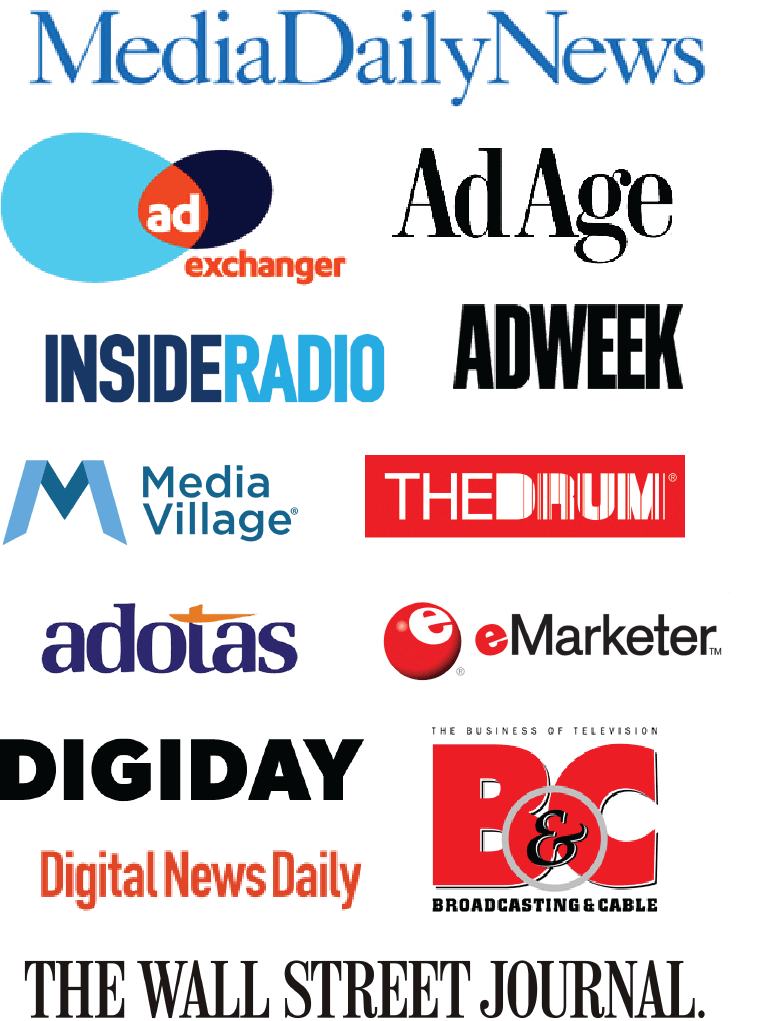Video (TV) advertising came into being right around 1941. Nearly 15 years later, ad spending reached $1billion. Video advertising evolved from black and white to color, sponsorships bloomed, screens got bigger and more vivid. Life was good for the typical TV ad sales guy.
Eventually, this all led to the first online advertising campaigns of the mid-1990s. The new video opportunities were heralded as the wave of the future – predicted to put a final nail in the linear TV coffin. But as new media platforms were born, changed, and expanded, the video formats chosen by advertisers did not. And that became a BIG problem.
Fast forward 25 years. A multitude of video advertising options abound and still, advertisers are re-purposing their linear TV ads to fit small screens. Not surprisingly, this led to an incomprehensible number of wasted impressions for advertisers. Many wondered if digital video advertising on personal screens was viable.
Fast forward another 5 years to today’s digital video advertising. Who knows how or why, (trial and error? Smarter, younger advertisers?) but video ads are finally starting to reflect the needs of the consumer who views them – shorter and targeted.
Today, legacy linear TV advertisers are most significantly implementing “evolved” ad formats in digital video. Probably since developing new (not repurposed) creative is more affordable for them than for smaller advertisers. And not lost on these large-scale advertisers is the fact that dominating this medium first with effective, consumer-friendly spots, will hopefully, finally, give them a long-term competitive advantage.
These advertisers also take notice that nearly 85% of consumers (source: MMP Adjust) report using a second device (phone, tablet, etc.) while watching big screen TV. So now, “second screen” advertising strategies must be in the plan to serve more personalized creative, and to compel / measure a viewer’s actions with a greater degree of confidence. As a result, our latest CTV Market Intelligence Report indicates that one in three advertisers are now seeking solutions that combine CTV / Linear measurement – and the demand is growing.
So how has digital video advertising – especially on small screens – evolved most recently?
Viewers’ Lack of Patience is Higher Than Ever – Research suggests at least 65% of viewers (source: IPG) skip online video ads as soon as they’re able to, with 76% of those who skip doing so out of habit. Why do people skip ads? Because they are historically too long, and they lack relevance to our lives.
Viewers Need to See a Story as Compelling as the Content Surrounding It – The power of AI / ML has made it easier than ever to leverage data and content to create the most compelling digital video advertisements. In the past, AI had been relegated to media selection, but now advertisers can use it to tell a compelling story to individuals or groups who have chosen the content where the ad appears. In recent months, several large tech platforms including Meta, Google and Adobe, have announced artificial intelligence tools to handle that sort of work.
A Resurgence in The Importance of Personalization – Google has reported that 66% of consumers feel it’s important to have a personalized experience online. And 76% indicated that a personalized engagement with a brand prompted a consideration of purchase. In a Salesforce study of Facebook video ads, only 10% are watched until the end, but when using similar personalized video ads, the completion rates increase to 78%.
Viewers Watch Ads with the Sound Off – The sound (or lack thereof) of video ads should accommodate the audience preferences and behaviors. Facebook reports that 85% of video views on its platform are silent, so it recommends using captions, text overlays, and visual cues without sound. Instagram also reports that 60% of video views on its platform are silent, so it suggests using captions, text overlays, and stickers to convey your message without sound.
IN CONCLUSION: The 4 Key Elements of a Successful Digital Video Ad
- The Content is Concise and Gets to the Point (10 – 15 seconds)
- Tell a Compelling Story to a Clearly Defined Target Audience (relevant, engaging, emotive)
- Product Benefits Are Personalized to the Viewer (leverage data and AI to focus messaging)
- The Video Can Work with or Without Audio (use symbols, captioning, visual cues)
Frank Papsadore is EVP Marketing at Advertiser Perceptions

